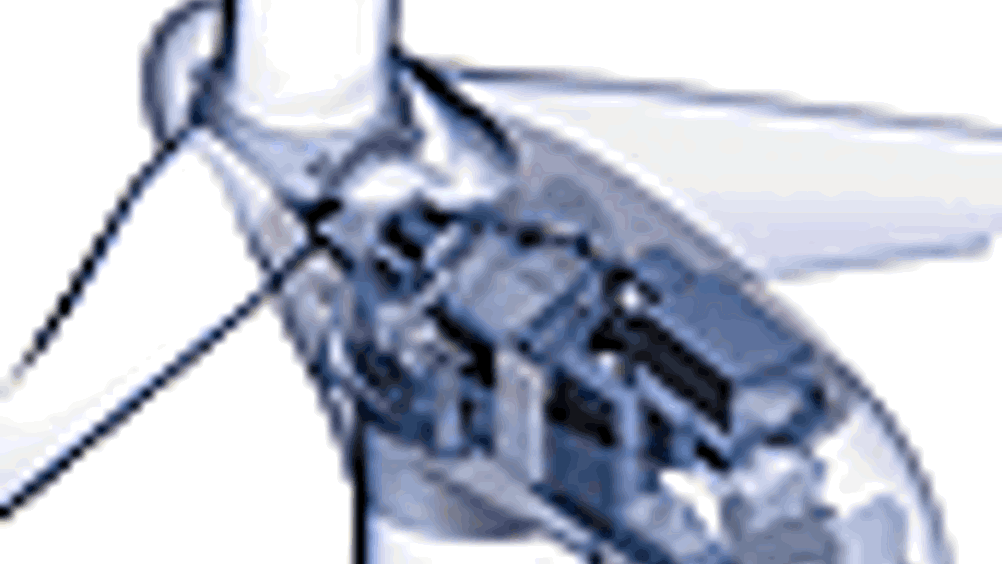Towering achievement

While controversy continues to rage over the siting of wind turbines, engineers are coming to grips with the technical challenges they pose.
Offshore turbines are becoming ever larger, and when mounting a huge rotor system on top of a thin pylon, the stresses that need to be overcome are large and complicated.
German company Multibrid has developed what it claims is the world's smallest and lightest 5MW offshore turbine. The M5000 tower head does not include a high-speed gear stage, which reduces the weight; the head weighs around 300 tonnes and the turbine can be pre-assembled on land.
Even with the three 56.5m blades fitted, the nacelle assembly weighs 310 tonnes, and can be hoisted up 102m on to the tower at sea in a single lift.
But to achieve this, Multibrid needed to pay extraordinary attention to the components within the nacelle — particularly the bearings. Rather than the multiple bearings in previous turbine designs, the M5000 has a single bearing. The company turned to bearings specialist Schaeffler to design the system, and the result was a double-row tapered roller bearing, weighing 7.2 tonnes, with an outside diameter of 2.6m and just 48.5cm wide.
The key to the design was a close collaboration with Multibrid, explained Gunnar Simm, head of application engineering and product design at Schaeffler's power transmission and railway division.
'In bearing development for wind turbines, it is very important to take into account the entire wind turbine system with all its various interacting drive train components,' he said. 'This makes it possible to significantly increase the reliability and economic efficiency of wind turbines.'
In the case of the M5000, the problem was the loads generated by the rotor. The novel drive train, without its high-speed gear stage, required the rotor hub to be supported directly by the rolling bearing inside the machine housing. Schaeffler's customised bearing allows the loads to bypass the gearbox-generator unit completely, tranferring them into the adjacent structure.
'The bearings for wind turbines are becoming larger and larger,' said Simm, 'which is why we start by closely studying the operating conditions, for example through measurement campaigns. Together with the customer, we work out failure modes and effects analyses to minimise potential risks.'
Schaeffler's maintenance services division, FAG Industrial Services, is to monitor the performance of the M5000 prototype at its test bed in Bremerhaven, Germany. Using sensors to record vibration, temperature and movement in the bearings, the company aims to detect any abnormal operation and correct it before it forces the turbine out of service.
Once the turbines are in full operation, this will help to schedule maintenance — a notoriously expensive exercise for offshore turbines, because of the heavy-duty cranes needed to remove and replace broken components.
Register now to continue reading
Thanks for visiting The Engineer. You’ve now reached your monthly limit of news stories. Register for free to unlock unlimited access to all of our news coverage, as well as premium content including opinion, in-depth features and special reports.
Benefits of registering
-
In-depth insights and coverage of key emerging trends
-
Unrestricted access to special reports throughout the year
-
Daily technology news delivered straight to your inbox










Water Sector Talent Exodus Could Cripple The Sector
Maybe if things are essential for the running of a country and we want to pay a fair price we should be running these utilities on a not for profit...